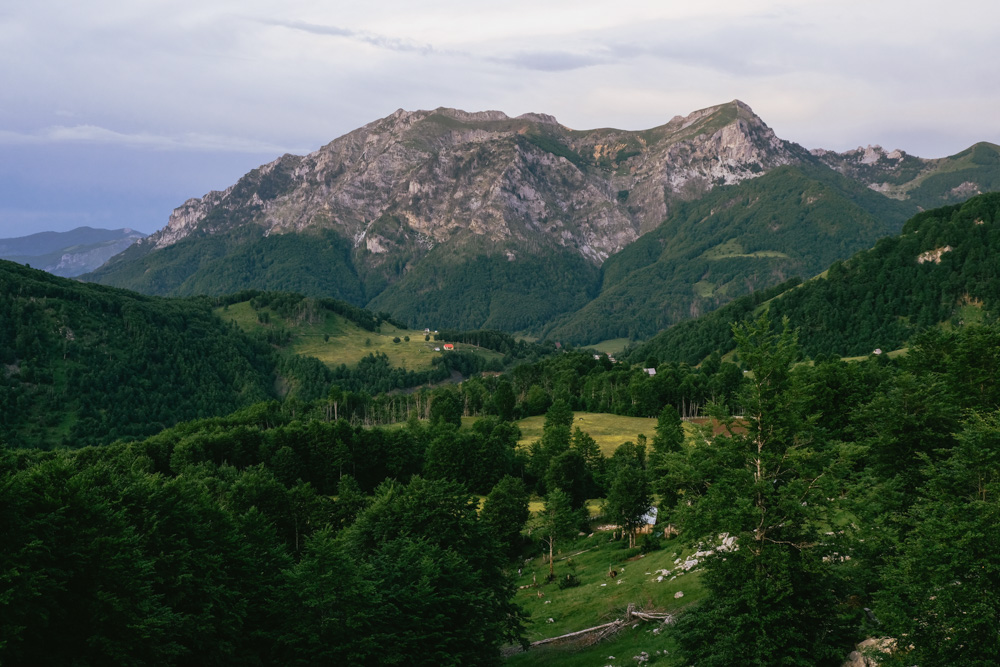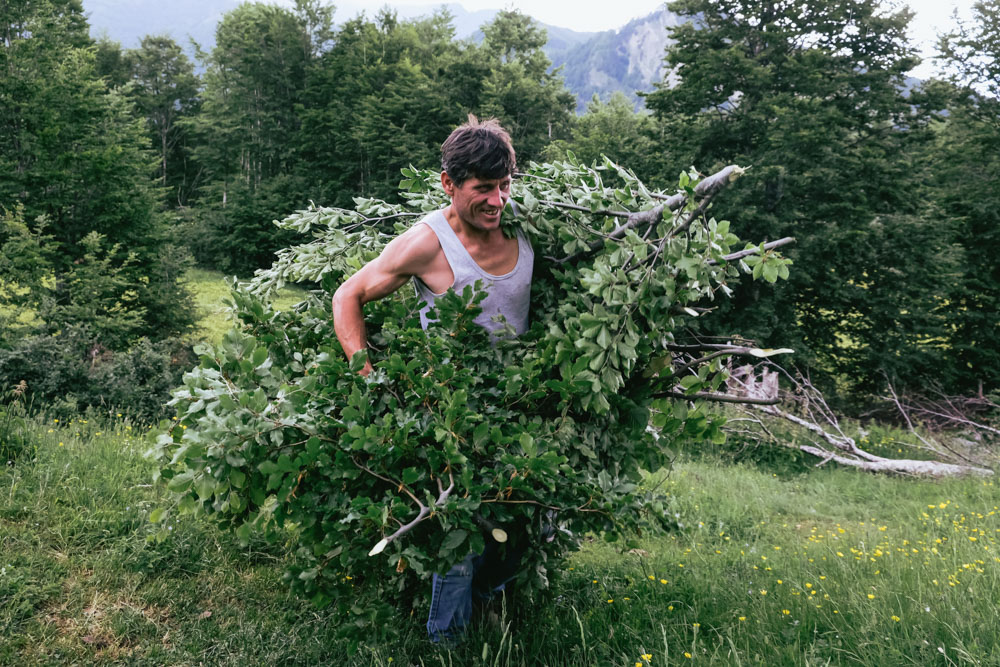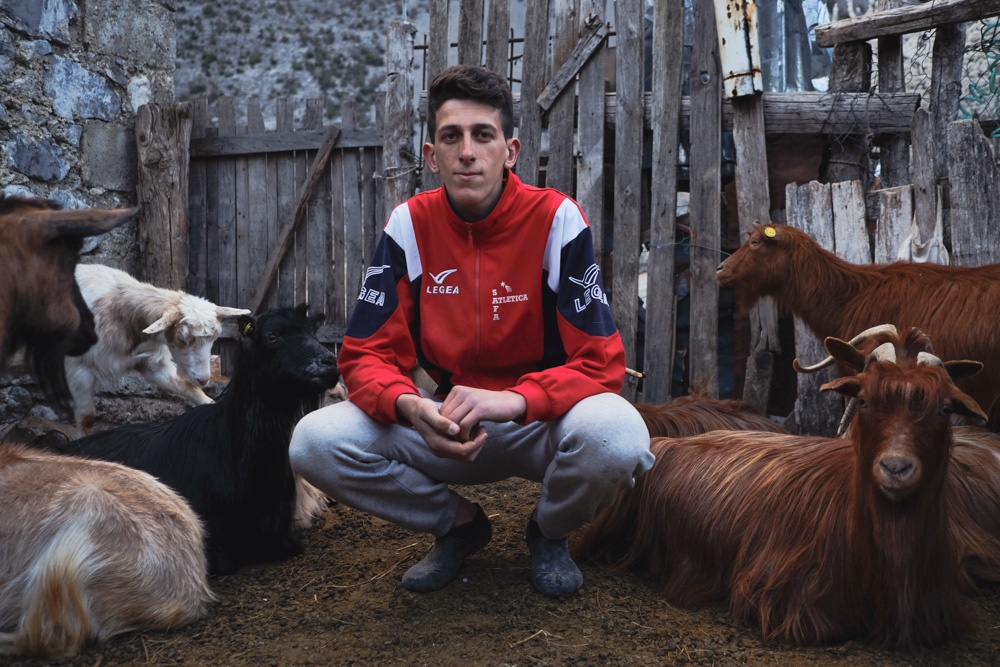blog
Interview with photographer Nick St.Oegger

Near Lepushë, Kelmend region, Albanian alps
F-Stop Magazine: How did you first become involved in photography and what led to you working in this medium as an artist?
Nick St.Oegger: I started photography while I was still at university studying philosophy, and didn’t have any background in the arts at all. My plan since I was young had always been to go to law school. At the same time, I’ve always had a passion for nature and hiking, so I began taking a camera with me to capture landscapes. My final year at university, a friend who knew I was interested in photography sent me the documentary War Photographer, about photojournalist James Nachtwey. This film was a sort of “a ha” moment for me, I watched it and instantly felt such a strong connection to photojournalism, and the ability to tell stories through photos, to try and give a voice to people. I completely abandoned my plans to attend law school and started trying to work as much as I could for local publications, just trying to get out and learn some of the skills I would need, and how to actually craft stories through pictures.
F-Stop: The Portfolio 2019 issue of F-Stop Magazine features your project “The Lament of the Mountains,” can you tell us about this project? What led to this work?
NSO: The story behind this work goes back several years. I had ended up travelling to Albania by chance in 2013 and was completely captivated by the wild landscapes, nature and warmth of the people. In 2017 I found out that Albania has one of the last undammed rivers in Europe, and that there were plans to build a series of large hydropower dams along its course. I returned that year to make several journeys along the Vjosa river, documenting the landscapes and people, and eventually self published the photo book Kuçedra: Portraits of Life on Europe’s Last Wild River. I also became really interested in the issues surrounding hydropower, something I saw the effects of growing up in the Western US, and learned that it’s not as “green” or friendly an energy source as most people would think. As a region, the Balkans is seeing a huge surge in hydropower development on the back of green energy subsidies from the EU and Western financial institutions, and investors are racing to build this infrastructure on the last undeveloped river systems in Europe.
This project is sort of a follow up to the book, but focusses on the Kelmend valley in the northern Albanian Alps. I saw a presentation by a French anthropologist who had been living in Kelmend, and the situation she described there was dire, with several small scale hydropower projects being constructed on the rivers. There aren’t the same amount of restrictions on small hydro projects, they often don’t require environmental impact assessments as the impact is assumed to be low. The reality is that a lot of these projects divert water into underground pipelines, drying up huge stretches of the natural river. The result of this is damage to the surrounding environment and delicate ecosystem of the river, as well as water supply issues for the local population, which largely rely on farming and raising livestock for survival. This is one of the poorest and least developed regions in the country, it’s also the region that has historically put up the most resistance to foreign intrusion (including during the communist regime), so people are very proud of their culture and the land as they feel they have fought to protect it and their customs for centuries. It’s also one of only a few places left in Europe where transhumance is practiced, which is the seasonal migration of herds of livestock (mainly sheep), to graze in high alpine pastures in the summer. Many people in Kelmend see the development of hydropower projects on the rivers as a direct threat to their lifestyle and cultural identity. Rather absurdly, the government is simultaneously trying to promote tourism in the region, encouraging people to eat trout from and kayak the very river they’re approving dams on.
The mountains in Albania have always been very important to me, I think they’re an incredibly unique place in Europe both in terms of the landscape but also the traditional culture that still exists there. I felt really compelled to spend time there building a body of work that would raise awareness about the situation, and about the effects of these small dams in general.

Gazmend Bikaj, shepherd, Kelmend region
F-Stop: Can you discuss your process for making these images, or your creative process more generally?
NSO: I’ve come to realise that I have a bit of a knack for installing myself in small communities with my personal work. I think I need that closeness and intimacy with people and I need to make myself vulnerable, I like the challenge of being an outsider in a small community. I also need to feel inspired where I’m shooting. I’m not always comfortable in urban environments, I get a lot of energy from being in nature, and so that often factors into my projects like this. For this project, I went much deeper than my previous work, possibly because I was working in a much smaller area and could easily return to the same places. The work became more about the people and culture, whereas my previous project was more about documenting the river itself and various landscapes along the way.
I was mainly working with shepherds and people in small isolated villages, staying in their homes. The hospitality there is truly amazing. The first few trips I brought all my mountaineering equipment, thinking I would need to stay in a tent, but I was pretty much forbidden from doing that. There are specific rules stretching back 500 years regarding hospitality and how guests are treated, so it was normal for people to give up their beds for me and feed me, which was difficult to try to accept at first. But also, importantly, I believe they tested me to see if I was someone they could trust, if I was going to stay with them rather than just blow in for a few days and leave. I drank raki (a homemade liquor) with the men, helped them out when they needed it, rode horses (which I hadn’t before) and spoke Albanian (probably terribly) with them. I think slowly slowly they saw that I was comfortable in the mountains, I came prepared, I shared with them and that they didn’t have to hold my hand. There was definitely a respect that had to be earned. There were a lot of important moments that I witnessed and shared with people there, including migrating the sheep for 40 kilometres to the high pastures on foot, where I essentially had to put the cameras down, grab a stick and help herd the sheep for eight hours. My trips to the valley were always pretty full on, I would almost become this different person, and the energy of being deep in the mountains was very special. In terms of the photographs, I just shot what felt right when things were happening in front of me. I think I was more fluid in my work on this project, it’s a bit rougher, more reportage style than my previous work.
F-Stop: When working on a project like this, how do you choose what or who to photograph, what are you looking to capture?
NSO: It’s always a bit different, I feel like I go in with a lot of conceptions and ideas of what I want to shoot based on research, but then it almost always ends up being completely different. I was introduced to a few families of shepherds when I first visited Kelmend, but there was one in particular, the Bikajs, who I felt an especially strong bond with and spent the most time with. I felt this connection immediately when I was introduced to the head of the family, Gazmend, there was just something in his eyes and his face, this sort of connection and understanding between us as humans that I immediately grasped. I felt the most comfortable with them, so I ended up following his family the most.
I wanted to capture a sense not just of the place and landscape, but the actual life that people lead there. I don’t want to romanticise it because it’s a hard life, it’s not always some idyllic place far away from the stresses of the modern world. On the other hand, even though it’s incredibly poor, not everyone is living in misery. In my time with the Bikaj family, I saw them experience a lot of joy in their lives, an understanding and appreciation for the land, animals and people around them, that this isn’t a life many people experience anymore. I hope that my work captures this, the sense of grace and dignity around people’s lives as well as the beauty of the landscapes, all of which is under threat.

Nikola, young shepherd, village of Selcë
F-Stop: Are you working on any other projects currently?
NSO: I’ve actually just relocated to Bosnia, where I’ve got a few projects I’m starting to explore. There’s a lot of ground to cover here with environmental stories, but I’m also looking at something with more religious and supernatural themes. I think the challenge I’m making for myself here is to try to avoid anything to do with the war, as I feel like everything always goes back to that and I’d like to show something very different about Bosnia as it’s another place with amazing mountains, unexplored places and an interesting history.
F-Stop: What photographers or other artists inspire you?
NSO: As photographers I really like Nadav Kander, Michael Schutmatt, and Chloe Dewe Mathews who all use landscapes heavily in their work. David Alan Harvey has also been a big inspiration, I did a workshop with him a few years back and he has such a great, encouraging energy.
To see more of Nick St.Oegger’s work visit the current Portfolio 2019 issue or www.stoeggerphotography.
Location: Online Type: Featured Photographer, Interview
Events by Location
Post Categories
Tags
- Abstract
- Alternative process
- Architecture
- Archives
- Artist residency
- Artist Talk
- Biennial
- Black and White
- Book Fair
- Car culture
- Charity
- Childhood
- Children
- Cities
- Collaboration
- Community
- Cyanotype
- Documentary
- Environment
- Event
- Exhibition
- Faith
- Family
- Fashion
- Festival
- Film Review
- Food
- Friendship
- FStop20th
- Gender
- Gun Culture
- Habitat
- home
- journal
- Landscapes
- Lecture
- Love
- Masculinity
- Mental Health
- Migration
- Museums
- Music
- Nature
- Night
- nuclear
- Photomontage
- Plants
- Podcast
- Portraits
- Prairies
- Religion
- River
- Still Life
- Street Photography
- Tourism
- UFO
- Water
- Zine

Leave a Reply